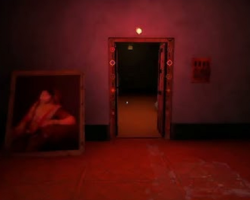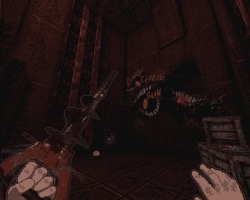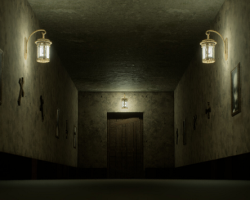Advertisement
Exmortis

Exmortis introduces players to an isolated character lost in the woods, disoriented and cold. A house appears nearby, offering what seems to be temporary refuge. But the inside reveals much more than shelter. The structure is filled with clues, signs of a violent past, and objects that suggest connections to something beyond normal human understanding. Through slow and careful exploration, the player begins to piece together events that led to this point, revealing more about the building, its former residents, and the protagonist himself.
Core Mechanics and Player Focus
The gameplay in Exmortis is centered around point-and-click interaction. Players move from room to room by clicking on doors and objects. Key progress often depends on discovering documents, reading carefully written entries, and unlocking mechanisms. Unlike action-based games, this one asks the player to observe, reflect, and analyze. Most of the tension comes from the details scattered across the environment. Solving a puzzle or finding a new passage often triggers additional information or changes in the environment.
Key Elements That Shape the Game
- Carefully written journal pages spread across multiple rooms
- Puzzles that require understanding of symbolic logic
- A branching conclusion determined by late-game decisions
- Ambient sound effects that reinforce mood and isolation
- Limited but effective use of visual horror
Each of these components helps define the structure of Exmortis and sets it apart from other browser-based experiences. The lack of direct danger does not reduce the tension—it increases it through silence and suggestion.
The Role of the Player in the Narrative
As the player uncovers more clues, the narrative begins to focus on the Exmortis—beings from another plane that seek influence in the material world. The house serves as both a historical archive and a ritual site. Some past inhabitants tried to resist the influence of the Exmortis, while others embraced it. The protagonist eventually faces a decision: become part of the force that controls reality or reject it entirely. The game leaves room for interpretation, and the meaning behind the documents and events is open to different readings.
Cultural Legacy and Player Reaction
Though Exmortis was not a large-scale release, it found popularity among online communities interested in horror and mystery. It became part of conversations about atmospheric storytelling and remains an example of what can be accomplished with simple tools. For many players, the memories of navigating its haunted rooms and reading its cryptic messages have stayed vivid long after playing. It showed that a game does not need advanced visuals or complex systems to make an impact—sometimes, mood, writing, and pacing are enough to create something memorable.
Advertisement






















































































Comments